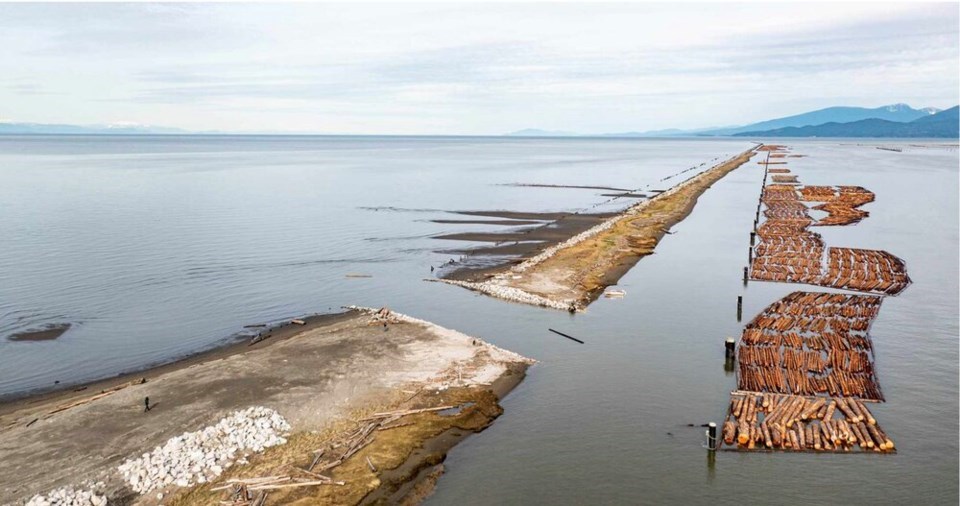More breaches are being planned in the North Arm Jetty on the Fraser River in Richmond, in a bid to revitalize natural salmon habitat.
Now, thanks to funding from the federal government’s Fisheries and Oceans department, two more are in the works.
The project is being carried out by non-profits Ducks Unlimited Canada (DUC) and the Raincoast Conservation Foundation (RCF) - along with the Tsawwassen First Nation and the Lower Fraser Fisheries Alliance - as they attempt to restore natural migration pathways for juvenile salmon and other fish species.
It’s anticipated that the work will restore the natural movement of freshwater and fine sediments and associated natural processes that create a healthy and resilient Fraser River estuary.
Second and third breaches coming over next two falls
The second breach will be constructed this fall and a third in the in the fall of 2023.
Over the last few years, RCF found that the jetty interrupted the natural movement of juvenile salmon, forcing them directly from freshwater areas into deeper waters of the Salish Sea.
This meant that they also bypassed the brackish marsh, sand and mudflat habitats upon which the salmon rely during the transition to saline ocean water.
RCF-led research in the Fraser estuary also found, over the past five years, a relatively high density of juvenile salmon in the North Arm.
Sarah Nathan, manager of provincial operations for DUC in B.C., says the collaboration will be key for delivering these large, complex projects.
“Our work is partnership-driven and these projects will be further examples of how conservation can occur with effective collaboration and innovation,” said Nathan.
106-year-old jetty disconnects Fraser River from its natural estuary
The North Arm Jetty was constructed in 1916, creating a 6.8-kilometre-long barrier that completely disconnects the north arm of the Fraser River from its estuary.
RCF will conduct effectiveness monitoring programs annually including directly monitoring passage at breach locations
Each spring, juvenile Chinook salmon spend an average of 41 days in the estuary en route to the Pacific Ocean.
The estuary is also the lifeblood for the endangered southern resident killer whales, which rely on adult Chinook salmon as their main food source.
The DFO funding of the project is part of a $5 million package which includes the North Arm Jetty breaches, the Sturgeon Bank Sediment Enhancement Pilot Project and the Alaksen National Wildlife Area Tidal Marsh Restoration project.

